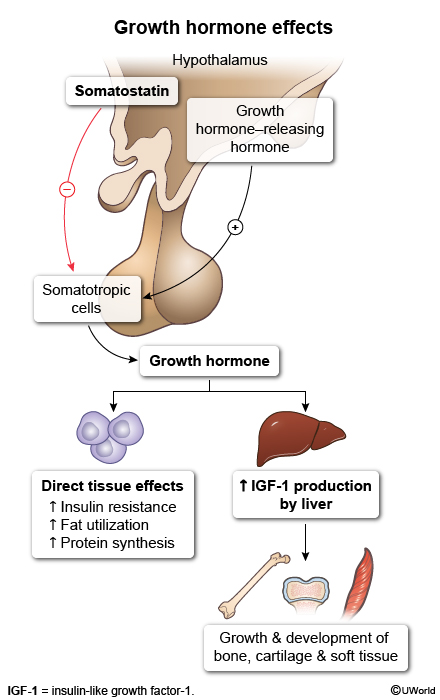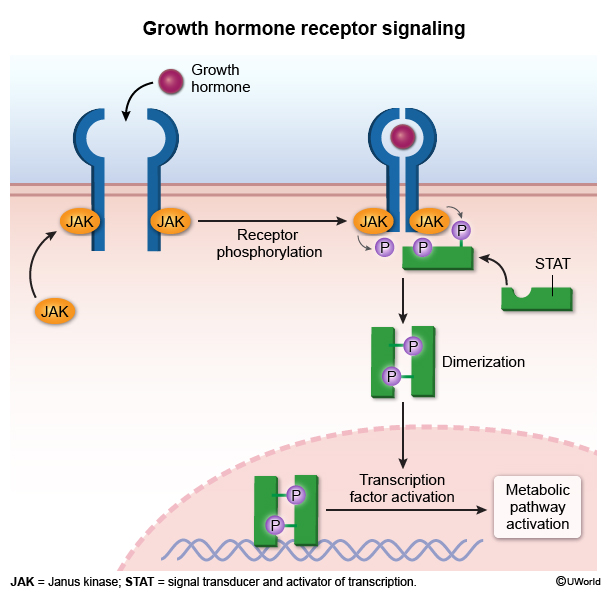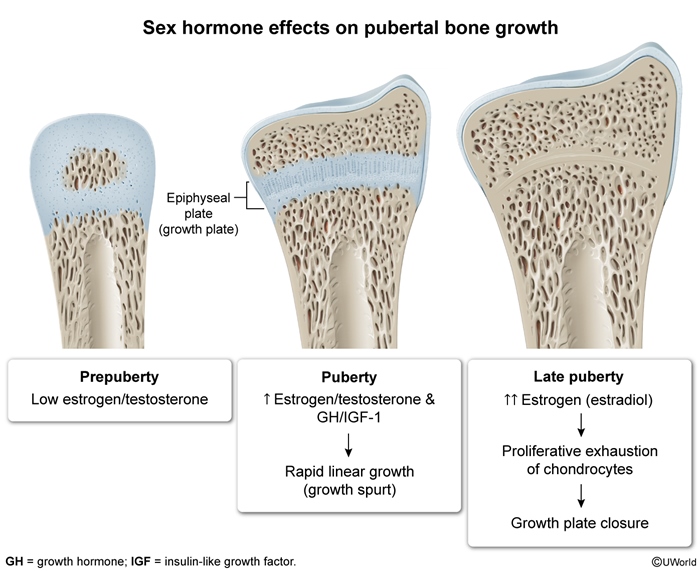Growth Hormone Disorders: Excess (Gigantism, Acromegaly) And Deficiency
Article Sections
Introduction
Growth hormone (GH), or somatotropin, is a peptide hormone secreted by the anterior pituitary gland that plays an essential role in growth, development, and metabolism across the lifespan. Abnormal GH levels, whether excessive or deficient, can lead to significant complications. GH disorders differ in their clinical manifestations depending on the age at onset and the degree of hormone imbalance. They are broadly categorized into GH excess and GH deficiency, with different consequences in children versus adults.
Pathophysiology of GH
GH is an anabolic hormone secreted by the anterior pituitary gland, and its primary function is to regulate growth, metabolism, and tissue repair. GH acts directly on tissues and indirectly via insulin-like growth factor 1 (IGF-1), also known as somatomedin C, which is produced primarily by the liver in response to GH. GH secretion is pulsatile and regulated by a balance of stimulatory and inhibitory signals from the hypothalamus.
Continue Learning with UWorld
Get the full Growth Hormone Disorders: Excess (Gigantism, Acromegaly) And Deficiency article plus rich visuals, real-world cases, and in-depth insights from medical experts, all available through the UWorld Medical Library.
Figures



